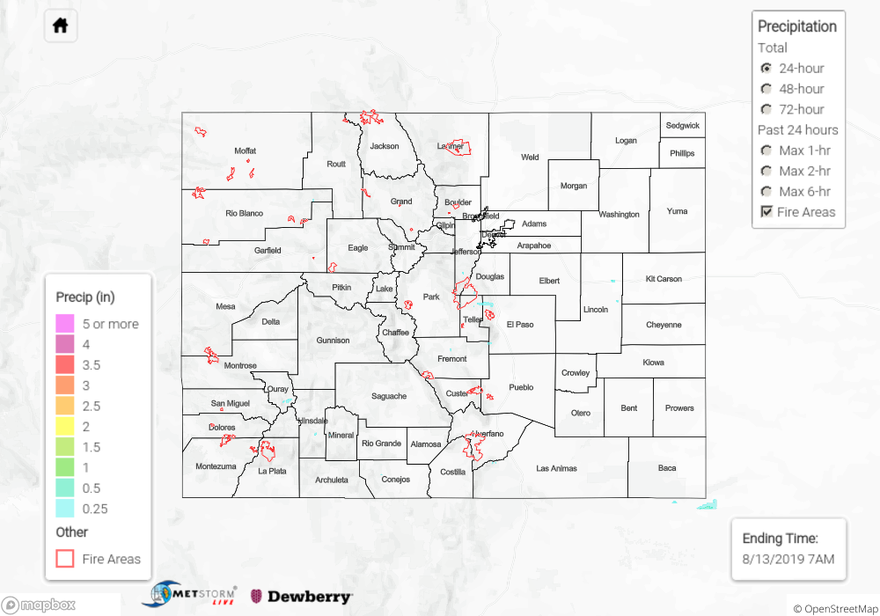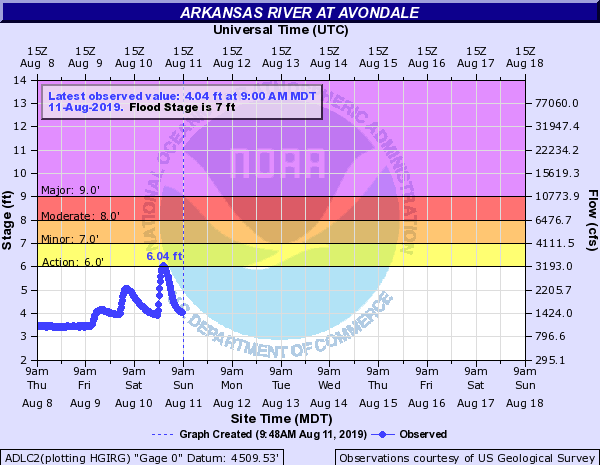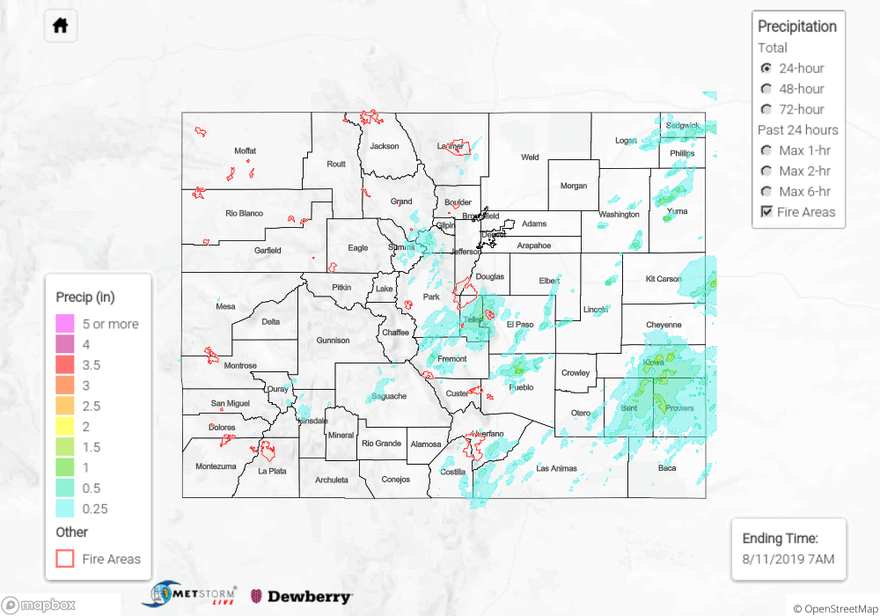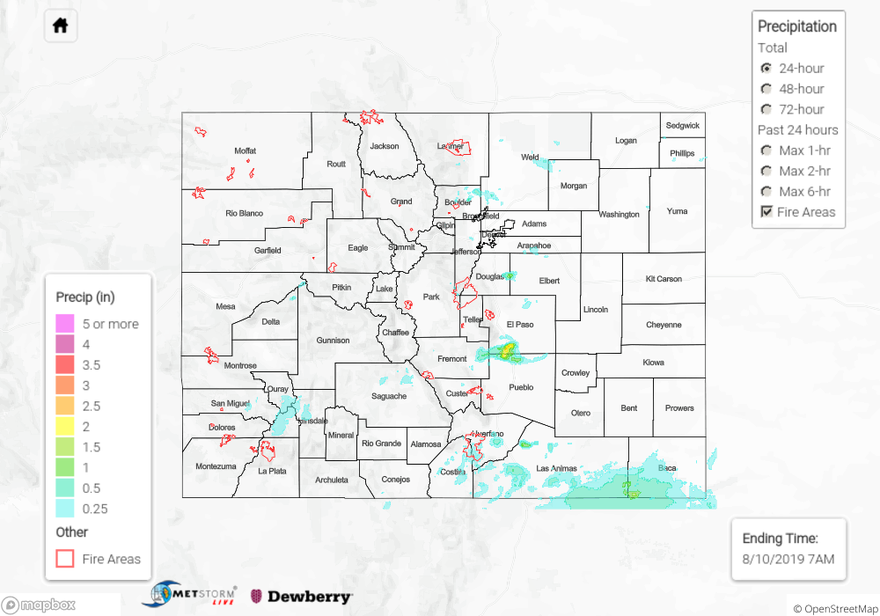Issue Date: Tuesday, August 13, 2019
Issue Time: 10:20AM MDT
Summary:
Westerly dry air and building high pressure really dried out the state yesterday after a week of persistent moderate to heavy rainfall. Dew points over the west dropped down into the teens and twenties as sunny skies and dry air mixed out a lot of the available surface moisture. Over the far eastern plains moisture was able to stick around a bit, but lack of support for severe weather kept the area from receiving any precipitation. There were a few areas along the foothills and Front Range that saw some light precipitation yesterday afternoon and early evening. Diurnal upslope flow was able to produce a storm or two over El Paso County, producing 24-hour totals around 0.25 inches. A CoCoRaHS station over Greeley in Weld County recorded 0.25 inches over 24-hours.
Back over the west, upslope flow of residual moisture lead to some weak thunderstorms over the eastern San Juan Mountains. A few rounds of small storms from 6PM to 8PM lead to accumulations between 0.12 and 0.31 inches over western and central Rio Grande County. One storm around 2PM yesterday lead to a 1.5-hour accumulation of 0.25 inches at a RAWS station to the east of Bayfield in Archuleta County. Ouray also reported a 24-hour total of 0.25 inches. Most of the rainfall over the San Juan Mountains was confined to the higher terrains, minus some minor spillover into the San Luis Valley. The rest of the western high country stayed mostly dry, with mild temperatures in the upper 70°Fs and 80°Fs.
For a look at precipitation over your area, please visit the State Precipitation Map below.
Click Here For Map Overview




